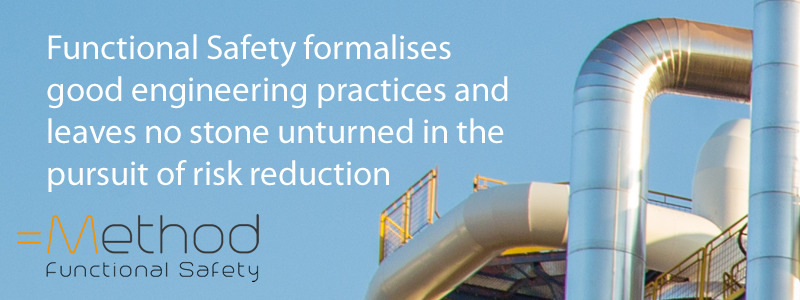
Functional Safety is an approach used by a range of industries to deal with hazards. The approach recognises that there are many ways that the risks posed by hazards can be prevented or mitigated, but sometimes basic practices aren’t enough to reduce the risk to a level we can accept. When that is the case, one option is to implement what we call “Safety Instrumented Functions” (SIFs) to give us that additional risk reduction.
A SIF would normally be made up of a sensor, some kind of logic device (logic solver) and a final element or actuator. Functional safety specifies the approach to be taken when selecting components to be used in a SIF and what should be done to configure those components to make a suitable SIF. It covers areas such as planning and procedures, competency, verifying and validating the work done. You could say that it formalises good engineering practices and that it leaves no stone unturned in the pursuit of excellence. That said, it recognises that the amount of time, money and effort you invest to reduce risk can be (and should be) proportional to the amount you need to reduce the risk by.
There is an IEC standard (IEC 61508) which gives us a generic (not specific to any industry) and comprehensive (defining requirements for product manufacturers, design contractors, systems integrators, end-users) approach to functional safety. From this generic standard, many other standards have been wholly or partly derived to be specific to particular industries: IEC 61511 for process industries, IEC 62061 for machinery, ISO 26262 for automotive and many others.
Article: What is Functional Safety?
Title: What is Functional Safety?
Published by: Method Functional Safety

Author: Method Functional Safety





 Keep up-to-date
Keep up-to-date